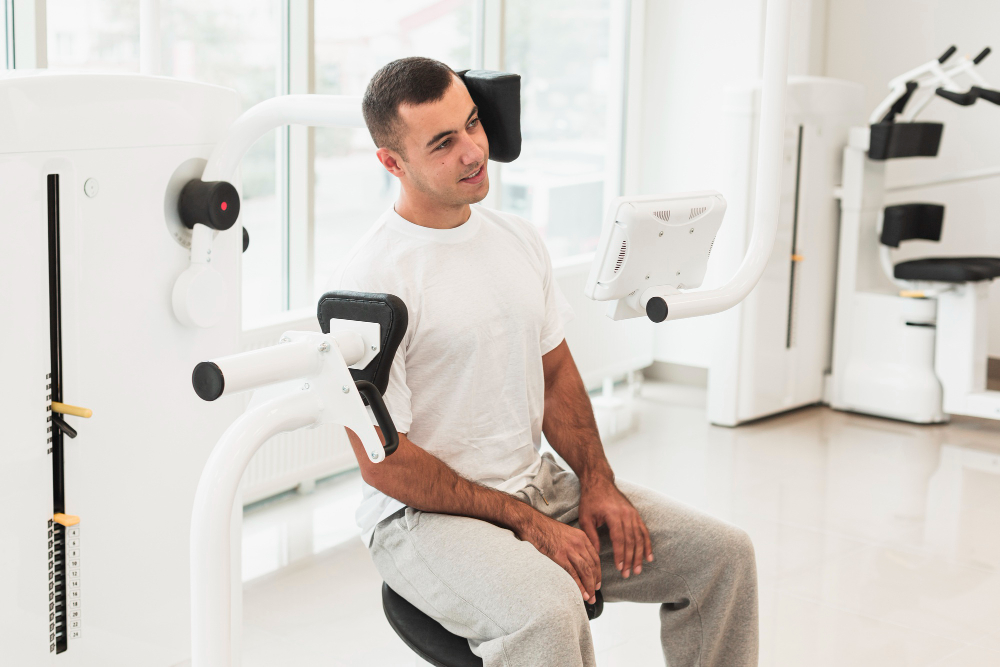
Last updated on by MRC
Chronic pain can feel like an unwelcome giant that refuses to leave—persistent, exhausting, and often life-altering. It affects everyday activities, limits mobility, and reduces confidence. Whether caused by an injury, illness, neurological condition, or past surgery, the struggle is real. But there is hope. Physiotherapy, one of the most trusted non-invasive treatment approaches, plays a powerful role in chronic pain relief and long-term mobility improvement.
Let’s dive into how physiotherapy helps manage chronic pain and why it remains one of the best approaches for sustainable recovery.
Chronic pain is typically defined as pain that lasts longer than three months. It may arise from:
While some conditions cannot be fully reversed, physiotherapy helps manage symptoms, restore movement, reduce discomfort, and prevent further damage. It focuses on improving the body’s natural healing capacity and strengthening areas affected by long-term pain.
Physiotherapy offers a wide range of benefits for individuals suffering from chronic pain. Here are the most important ones:
Techniques like manual therapy, therapeutic exercises, soft-tissue manipulation, and electrotherapy (including TENS) work together to reduce pain. By decreasing pressure on affected tissues, physiotherapy helps improve comfort and increases mobility.
Chronic pain often restricts movement. Physiotherapists use targeted stretching routines and mobilization techniques to improve joint flexibility, restore movement, and make daily activities more comfortable.
Stiff joints and tight muscles are common in chronic pain conditions. Physiotherapy interventions help increase joint mobility and ease stiffness, allowing smoother movement with less discomfort.
Pain often causes people to move less, which weakens muscles over time. Strengthening exercises help support joints, improve posture, and prevent strain on vulnerable areas.
With reduced pain and improved mobility, individuals can perform daily activities—walking, bending, lifting, sitting, or climbing stairs—with greater ease. Physiotherapy helps restore independence and confidence.
As mobility improves and pain reduces, patients experience better mental well-being, improved mood, and greater control over their health.
Chronic pain frequently disrupts sleep. By reducing discomfort and promoting physical relaxation, physiotherapy contributes to more restful sleep—important for healing and recovery.
A physiotherapist plays a central role in evaluating the root cause of pain and creating a personalized treatment plan. Here’s how they help:
These exercises are tailored to the patient’s specific condition and goals. They help reduce pain, improve mobility, strengthen muscles, and prevent further injury.
Hands-on techniques such as joint mobilization, soft-tissue release, and therapeutic massage help reduce pain, decrease stiffness, and restore movement.
This modern technique involves inserting thin needles into trigger points to reduce muscle tension and activate the body’s healing response. It’s especially effective for back pain, neck pain, and muscle tightness.
Depending on the condition, physiotherapists may use TENS, ultrasound therapy, or heat/cold therapy to reduce pain and inflammation.
Understanding chronic pain is essential for long-term management. Physiotherapists guide patients on posture correction, lifestyle adjustments, pacing techniques, and safe movement strategies. This empowers patients to take control of their recovery.
For individuals seeking reliable chronic pain treatment in Kolkata, Medical Rehabilitation Center (MRC) is a trusted name. Known as the best pain management clinic in Kolkata, MRC specialises in comprehensive physiotherapy and indoor rehabilitation, especially for:
Their facility includes:
The combination of advanced technology and expert physiotherapists ensures effective long-term relief and functional improvement.
Physiotherapy helps manage chronic pain through exercise, manual therapy, mobility training, and patient education. It focuses on strengthening the body, improving movement, and reducing stress on affected areas—leading to long-term pain relief.
Common pain management therapies include physiotherapy, cognitive behavioural therapy (CBT), acceptance and commitment therapy (ACT), and mindfulness-based approaches. Physiotherapy remains the most effective physical treatment for improving mobility and reducing discomfort.
Exercise improves mood, boosts energy levels, reduces inflammation, strengthens muscles, and enhances overall mobility. Regular physical activity also helps improve sleep quality, which is essential for managing chronic pain.









